

 |
The North American P-51 Mustang is right at the top of the page because, in my opinion, it is the coolest airplane ever built. In early 1940 the British approached North American Aviation to inquire if they could mass produce Curtiss P-40's. The company said they could build the British a better airplane. On 9 September, 1940, 102 days later, the prototype, NX-73X, was rolled out of the North American factory in Englewood, California. It flew on 26 October, 1940.
|
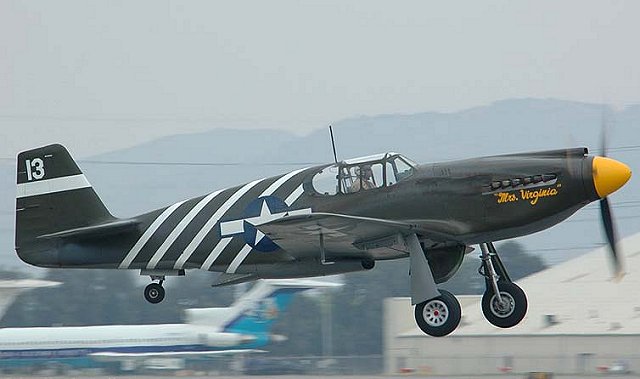
|
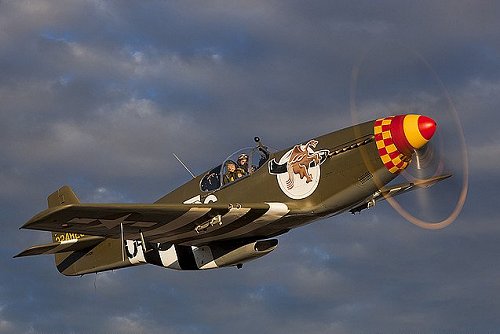
|
|
Max Speed: 437 mph Cruise Speed: 275 mph Range: 1000 sm Ceiling: 41,900 ft MTOGW: 12,100 lbs
Armament: (6) 50 cal
|
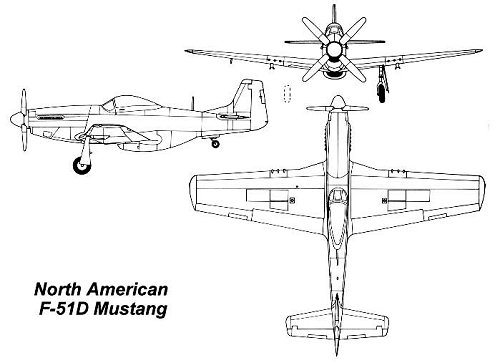 |
|
The airplane was re-designated the F-51 in 1948 and flew in combat again in the Korean war and subsequently served in many USAF Reserve and ANG units. The airplane was retired in 1957. 15,469 of all types were built, the last one in Dallas, Tx in 1948. The definative version, the P-51D (shown above and right) was powered by the supercharged Rolls-Royce Merlin 1650 liquid-cooled V12 engine which put out 1695 hp all the way up to 30,000 feet. This version also had the bubble canopy which greatly improved visibility.
|
 |
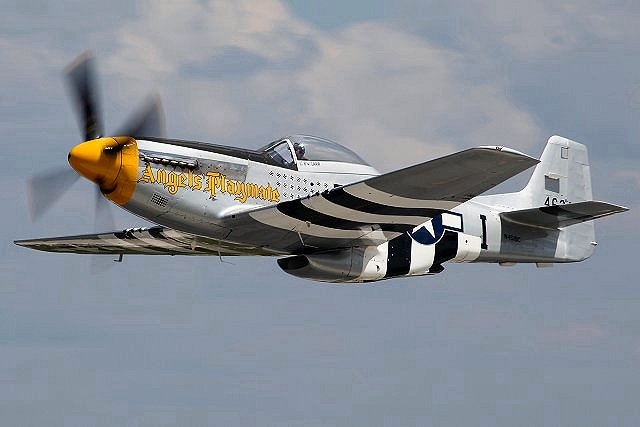 |

|
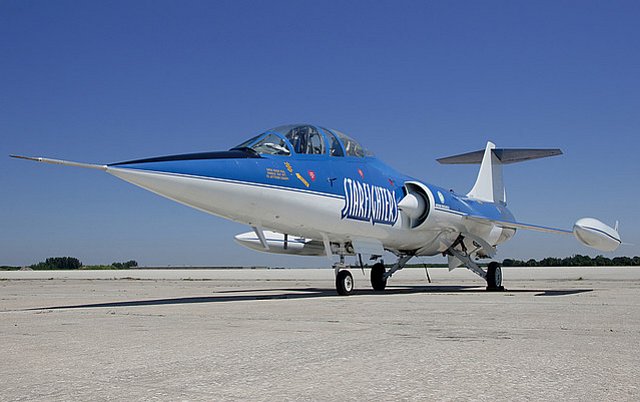 |
Like all of the so called "Century Series" fighters the F-104 had two remarkable characteristics: Startling performance, and a horendous accident history. Designed by Kelly Johnson at Lockeeds Skunk Works in California. The prototype flew for the first time on 18 February, 1954. The "official" first flight occurred on 4 March, 1954. This is the way it is usually done in aircraft development programs; The "first flight" is hardly ever the first flight. 2578 Starfighters were built by Lockeed and under license to various foreign manufacturers. 296 in both single seat and two-seat versions went to the USAF.
|

|
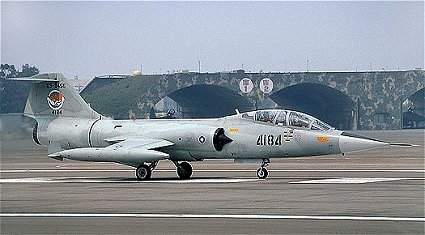
|

|
Because of the very unusual design characteristics, the airplane was designed specifically for high speed, it had some flying qualities that were far ahead of the capablities of the pilots of the time. This produced an extremely high accident history. The German Air Force had a very high accident rate with the F-104 as did the Canadians. The Germans lost 30% of their 104's. Canada lost 46.5% (110 of 235) of their's. The accident rate for the U.S. Airforce by comparison 26.7 per 100,000 flight hours as of June of 1977 and 36.3 per 100,000 flight hours through the end of 1977, the highest of any Century Series fighter. The accident rate for the F-106, by comparison, was 14.2/100,000 flight hours and for the F-100 16.25/100,000 flight hours. The Germans called the airplane Witwenmacher, the "Widow Maker." |
|
Max Speed: 1328 mph Cruise Speed: M 0.90? Range: 1000 sm Ceiling: 50,000 ft MTOGW: 29,027 lbs
Armament: (6) 20 mm
|
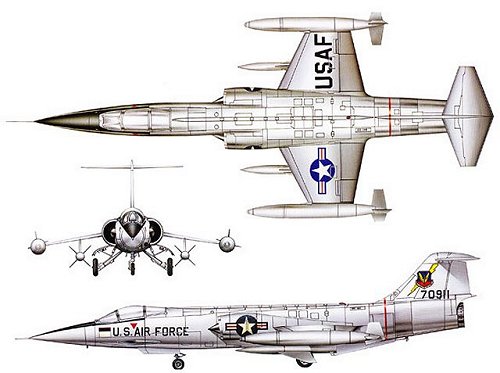 |
The stabilator (horizontal tail surface) was mounted atop the fin to reduce inertia coupling. Because the vertical fin was only slightly shorter than the length of each wing and nearly as aerodynamically effective, it could act as a wing on rudder application, rolling the aircraft in the opposite direction of rudder input. To offset this effect, the wings were canted downward, giving 10 degrees anhedral. At extremely high angles of attack the F-104 was known to "pitch-up" and enter a spin, which in most cases was impossible to recover from. A ventral fin was added to improve directional stability at high pitch angles.
None of these things keeps the Lockeed F-104 Starfighter from being one of the neatest airplanes ever.
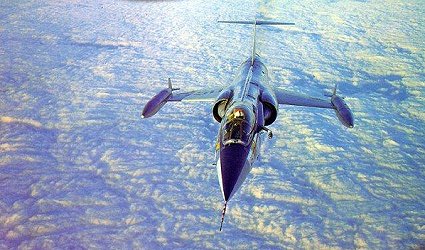
|
The F-104 has very short trapizoidal wings with a thickness-to-chord ratio of only 3.36% and very sharp leading edges (.016 inch radius). The very thin wing meant that all of the fuel and landing gear had to go in the fuselage. Tiptanks were installed which increased it's range but slowed the airplane down. The F-104 had an aluminum airframe which limited it's top speed to Mach 2.2 because of the aerodynamic heating . The Starfighter was the first US combat aircraft capable of sustained Mach 2 flight. The very small thin wings presented other operational problems. As long as the airplane was in level flight, because of it's speed, other fighters of the time couldn't touch it, but it's sustained turning performance was poor. It was fitted with maneuvering flaps on the wing leading edge and plain flaps on the trailing edge augmented by a Boundary Layer Control system to lower the landing speeds. The takeoff speeds are on the order of 190 kts., landing speed, of course, varies with weight but, are on the order of 180 kts. |
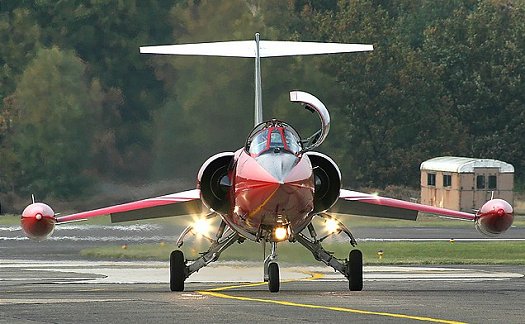
|

|

|

|
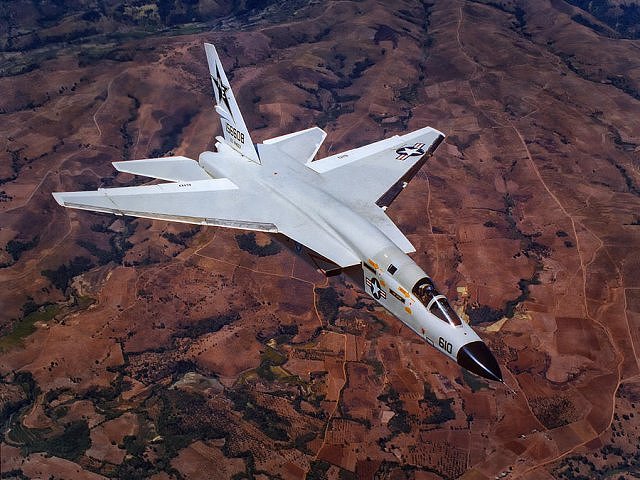
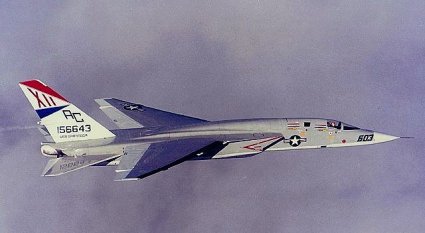
|
I cannot improve on the description of the The North American RA-5C Vigilante written by Charles Stafrace in his book of the same name published by Guideline Publications as part of their Warpaint Series. "The North American RA-5C was a paradox. It was an aircraft of extraordinary performance, introducing aerodynamic, technological, and electronic features that were state-of-the-art at the time of it's introduction and which were to become standard characteristics in the combat aircraft that followed it. In fact, it probably introduced more novel features than any other combat aircraft in history. The Vigilante featured an all moveable vertical tail. The horizontal tail planes which served as trim and elevators (pitch control) when operated simultaneously by fore and aft movement of the stick, and at the same time provided roll control when operated differentially by side-to-side |
Amoung the many "firsts" on the Vigilante was the first use of an airborne digital computer for bomb and navigation computations. Also the first Bomb-Nav System with inertial auto-navigation coupled to radar and television sights for check point verification. The Vigilante had the first heads-up display (HUD), the first fully integrated autopilot/air data system for Bomb/Nav weapons release, the first monopulse radar with terrian avoidance, the first variable engine inlets using horizontal ramp geometry, the first fly-by-wire control system, and the first auto-throttle system.
| It provided the US Navy with such an unparalleled reconnaissance capability that it's retirement from operations in 1979 left a gap in that role that remained unfullfilled for several years. Yet it was not so popular with it's crews, as it earned a reputation of being a difficult aircraft to land aboard a carrier, so that pilot inexperience and a high approach speed resulted in a number of ramp strikes and losses of aircraft and crews. As a result, it had the highest loss rate of any US Navy combat aircraft during the Vietnam War, though very valid reasons for this will be found in this account. Only 156 examples were built, all for the US Navy with which it remained in service for just a decade and a half, though no in the role for which it had been designed. Thus it would not be surprising that many aviation enthusiasts do not know that this remarkable airplane existed, likely because it's operational record during the very eventful 1960s and 1970s was rather unsung though invaluable. But on balnace, the Vigilante could boast to have introduced new and far reaching benchmarks for moderrn combat aircraft, and operationally it excelled in the tactical reconnaissance role. | 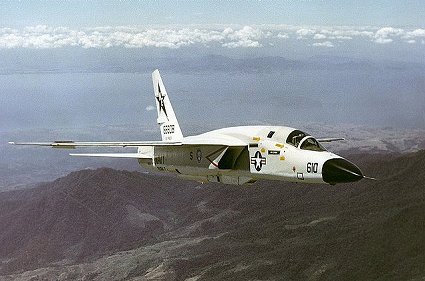 |
The Vigilante was built in three variants. The initial one was the A3J-1 necular bomber, re-designated the A-5A in 1962, followed by the A3J-2 conventional bomber re-designated A5-B, and lastly the A3J-3 (sometimes reffered to as the A3J-3P), re-designated the RA-5C, which was a tactical reconnaissanc bomber with a mix of optical and electronic sensors. ..."
|
Max Speed:
M 2.0 + Cruise Speed: M 0.90? Range: 2050 sm Ceiling: 48,400 ft MTOGW: 65,988 lbs
Engines:
|
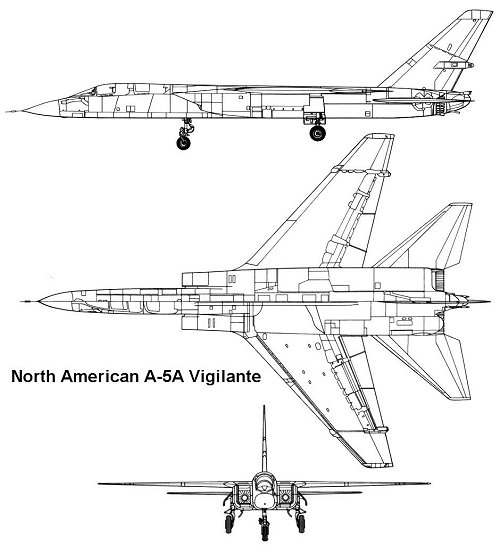 |
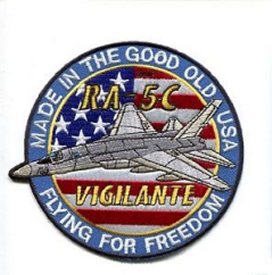
|
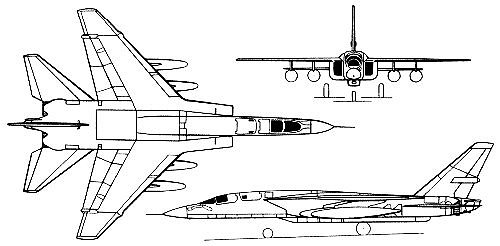 RA-5C Version |

|
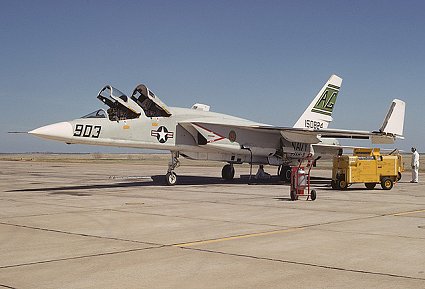
|
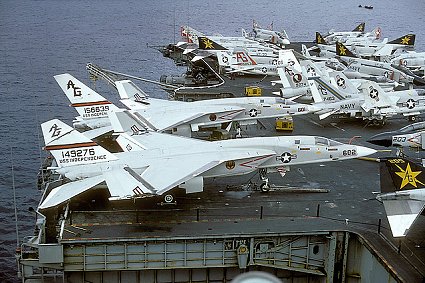
|

|
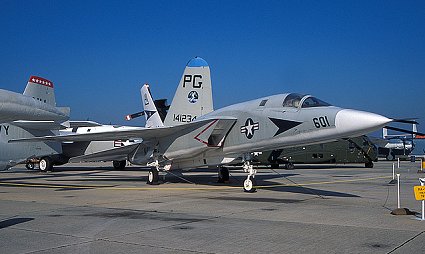
|
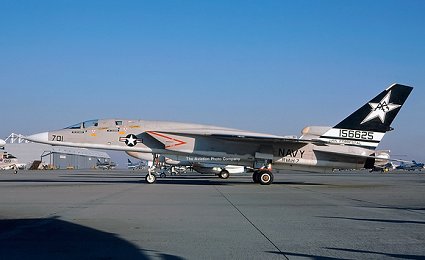
|
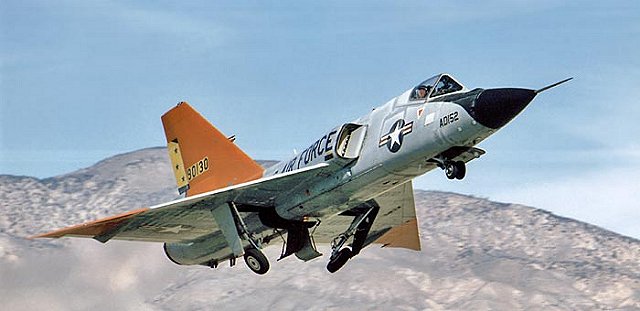

|
"Ask any pilot who has piloted the Six and he will quite readily tell you that it was one of the best aircraft he had ever flown. In typical delta-winged control configuration (equipped with "elevons" instead of horizontal stabiliser and elevators), the Six felt much the same as any conventionally designed aircraft in flight, according to Six pilots familiar with other conventionally winged aircraft. The Six handled well at low speeds as well as high ones, even when operating at or near specified minimums. General flight characteristics of the Six fitted with the supersonic rated external fuel tanks are essentially the same as in "clean" configura- tion, except that control at lower speeds is somewhat more demanding. Advantages of the delta wing with its high surface area included excellent performance at high altitudes and agile turning ability at intermediate and lower altitudes.
|
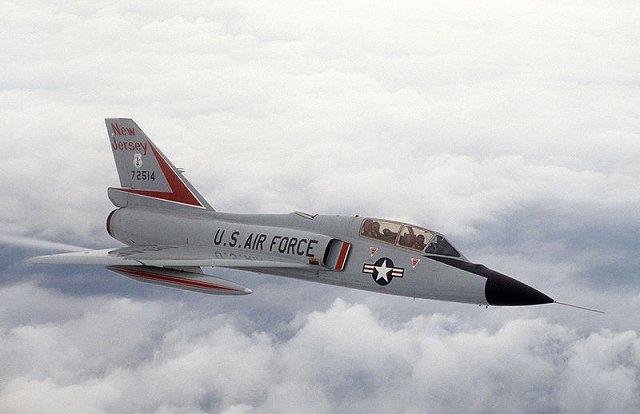
|
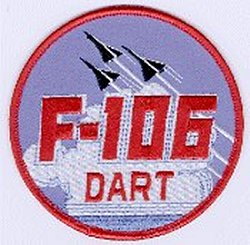
|
Furthermore, the Six was a straightforward and 'honest' aircraft when flown within the parameters of its flight envelope. As with any advanced high-performance aircraft, however, flying beyond the envelope could occasionally become a hazardous undertaking.
|
Engine run-up and last minute checks for engine performance indications took place; flight controls were checked, nose wheel steering positively engaged and then brakes were released for take off. The throttle was advanced to full military power, after a final check to ensure that a straight roll was taking place, then the throttle was moved smartly outboard (afterburner selection was not directly forward of military power setting, but rather next to it) to engage the reheat and airspeed advanced rapidly after a routinely healthy jolt in the pants indicated the afterburner had engaged. Rotation speed was about 120-135 KIAS and at this point the nose was raised to about 15 degrees. Taking care not to exceed 17 degrees vertical (to keep the tail from scraping), you let the aircraft fly itself off the runway. The Six became airborne at about 184 KIAS and at 250 KIAS the reheat was chopped and the aircraft accelerated to 400 knots for the climb out, keeping the rate to .93 Mach. This speed was maintained for subsequent climb-out and cruise under normal conditions.
|
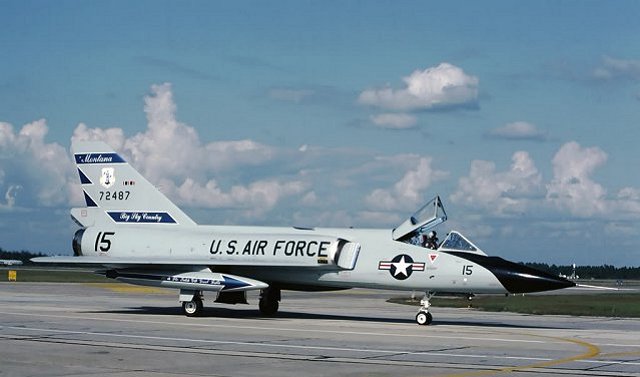
|
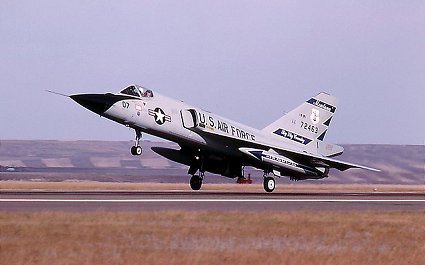
|
Back home, initial approach was flown at about 325 knots. Break was carried out clean, rolling out on the downwind at about 1591 feet altitude, with landing gear lowered at about 250 knots (gear retraction was mandated on take off before reaching 280 KIAS to avoid damage, as acceleration was so great with reheat that this was quite easy to exceed). Landing approach speed of 180 knots was usual and characteristic increased nose-high attitude resulting from delta-wing speed bleed-off was easy to misjudge without prior delta wing experience. Resultant loss of altitude could occur rapidly, therefore, and airspeed and rate of descent were controlled largely through power adjustment. Speed brakes (which also housed the drogue chute) were opened at any point on final turn or approach. Power was then incrementally reduced after the final roll out to reach "prior-to-flare" speed and then reduced to idle as aerodynamic braking killed airspeed until the main gear wheels touched. The drag chute was deployed at touchdown and the nose was maintained at about 15 degrees to further scrub speed until the nose-gear dropped on its own to the runway as the aircraft slowed down.
|
Pilots reported that coming in hot across the end of the runway at 180 knots was a source of some major excitement in a high-performance delta-winged fighter such as the Six, and reliable word has it that such landings in cold areas where icy runways were common during winter operations were even more thrilling. The margin for error was small in these circumstances and flight proficiency was the key operative phrase for Six pilots. A normal interception mission was anywhere from 100 to 120 minutes in duration, depending upon the type and profile of mission flown.
Once off the active runway, the drag chute handle was pressed fully home, which action released it and a taxi back to the ramp usually brought a gratifying feeling of great fulfillment to "Sixers" in having once more flown a satisfying mission in this beautiful beast.
|
Max Speed: 1328 mph Cruise Speed: M 0.90? Range: 1000 sm Ceiling: 50,000 ft MTOGW: 29,027 lbs
Armament: (6) 20 mm
|
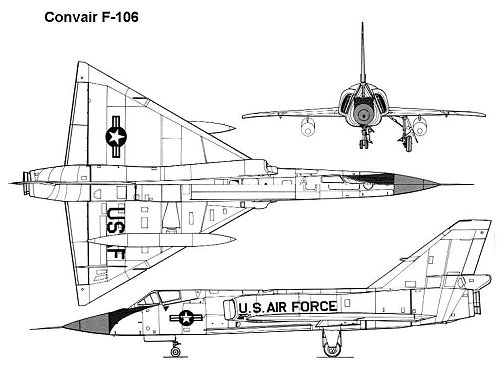 |
|
Despite the level of sophistication found in the F106A Delta Dart in its service life, it was regarded by the US Air Force as having the "greatest mission-task loaded cockpit" among all active USAF service aircraft types flown in the 70s and despite being an excellent aircraft to fly, it required a competent and proficient pilot to wring every bit of its excellence out of it. It was also a very complex and sophisticated aircraft for its day, requiring a rather extensive and demanding ground service & maintenance schedule. Much of this was attributable to the intricacies of the complicated Hughes MA-1 fire control system that formed its heart and soul. Given these requirements, however, it was a reliable, dependable, and deadly accurate weapons platform with which to counter any conceivable threat of airspace penetration. Above all, the Six was an absolute joy to fly--truly a pilot's airplane--and was loved by all who worked in or around it. It was regarded with almost as much affection by those who maintained it (despite its time-intensive nature) as by those who actually flew it.
|
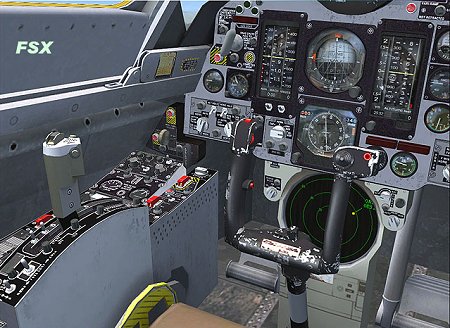
|

|
There was an old saying not long ago, spoken in reference to the Convair F-106 Delta Dart: "When you're out of Sixes, you're out of interceptors!" Pure air defense interceptors may now be relegated to aerospace history, but for many of us who served in the US Air Force during the "Cold War" era, there will never be another aircraft quite like the ultimate progeny of Herr Doktor Professor Lippisch's forward looking delta winged aircraft designs." (Photo at the left dramatically shows the Conical Camber of the Delta Dart's wing leading edges. Later, also applied to the B-58 Hustler.)
|
The Cornfield Bomber, pictured here shortly after earning its nickname. On 2 February 1970, an F-106 of the 71st Fighter-Interceptor Squadron, piloted by Captain Gary Foust, entered a flat spin over Montana. Foust followed procedures and ejected from the aircraft at 14,000 feet. The resulting change of balance caused the aircraft to stabilize and later land "wheels up" in a snow-covered field, suffering only minor damage. The aircraft, promptly nicknamed "The Cornfield Bomber", was then sent back to base by rail, repaired and returned to service, and is now on display at the National Museum of the United States Air Force. For this story Click here.
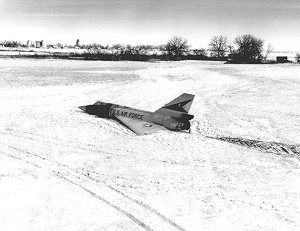
|
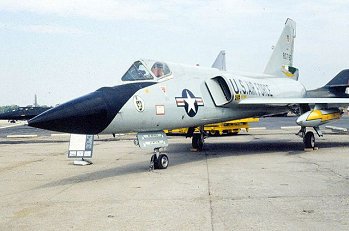
|
Narrative from "A Brief History of the Convair F-106 'Delta Dart'"
By Kalikiano Kalei
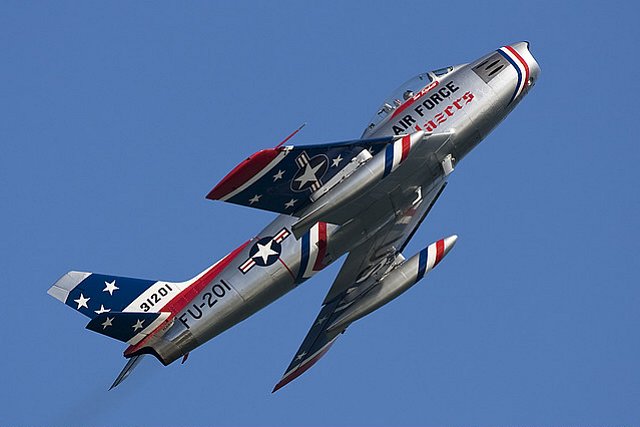
|
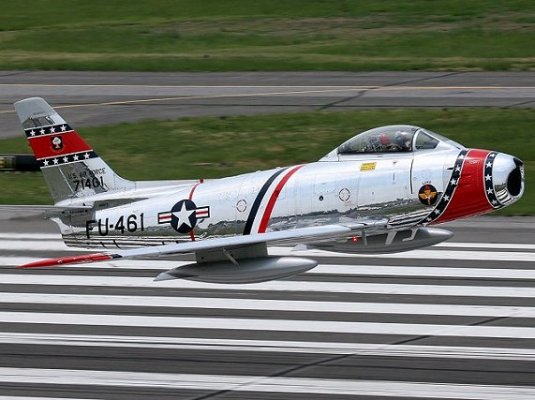
|
More than 6,000 F-86s were manufactured by North American Aviation's Los Angeles, Calif., and Columbus, Ohio divisions.
The first swept-wing airplane in the U.S. fighter inventory, the F-86 scored consistent victories over Russian-built MiG fighters during the Korean War, accounting for a final ratio of 10-to-1. All 39 United Nations jet aces won their laurels in Sabres.
Four models of the craft (F-86A, E, F and H) were day fighters or fighter bombers, while the F-86D, K and L versions were all-weather interceptors.
Successive models of the daylight versions - all designed to destroy hostile aircraft in flight or on the ground - were equipped with more powerful engines and armament systems that ranged from bombs and rockets to machine guns and cannon. All were rated in the 650-mph class with a 600-mile combat radius and a service ceiling of more than 45,000 feet.
 |

|
Forerunner of the operational Sabre was the XF-86, first flown Oct. 1, 1947, by North American Aviation test pilot George Welch. A few months later, Welch became the first pilot to fly the plane at Mach 1 in routine flight. Although technically rated as subsonic, the Sabre was no stranger to supersonic speeds. Various models of the Sabre held world speed records for six consecutive years, setting five official records and winning several National Aircraft Show Bendix Trophies.
In September 1948, an F-86A set the Sabre's first official world speed record of 570 mph (917 kph). This mark was bettered in 1952 by an F-86D that flew at 698 mph (1123 kph). The D became the first model of a fighter to better its own record, in 1953, with a run of 715 mph (1151 kph).
The F-86E and subsequent models incorporated a unique control system, developed by North American, called the "all-flying tail." The F-86A contained a booster control system that called for the pilot to do part of the work of controlling the aircraft, whereas the newer system added full power-operated control for better maneuverability at high speeds. An "artificial feel" was built into the aircraft's controls to give the pilot forces on the stick that were still conventional but light enough for superior combat control.
U.S. production of the Sabre Jet ended in December 1956.
Narrative from "From the Boeing Company website"

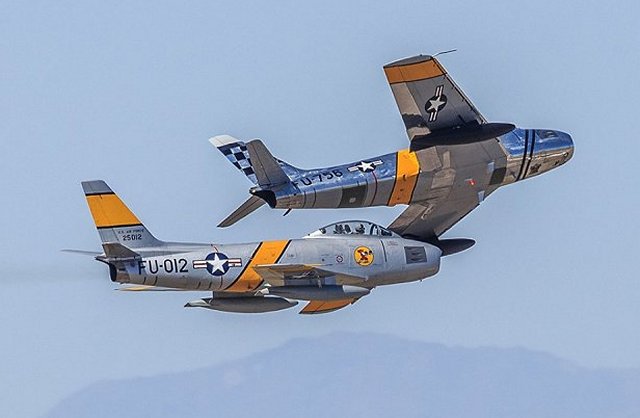
 |
The F-86A set its first official world speed record of 670 miles per hour (1,080 km/h) in September 1948,[18] still some 32 miles per hour (51 km/h) short of the 702 miles per hour (1,130 km/h) unofficial rocket-powered aircraft speed record set with an Me 163B prototype in early July 1944 tests, which itself had a 23.3° wing sweepback angle. Several people involved with the development of the F-86, including the chief aerodynamicist for the project and one of its other test pilots, claimed that North American test pilot George Welch had unofficially broken the sound barrier in a dive with the XP-86 while on a test flight on 1 October 1947. Officially, Chuck Yeager broke the sound barrier on 14 October 1947 in the rocket-propelled Bell X-1 during level flight, making it the first true supersonic aircraft. Five years later, on 18 May 1953, Jacqueline Cochran became the first woman to break the sound barrier, flying a "one-off" Canadian-built F-86 Sabre Mk 3, alongside Chuck Yeager. Col. K. K. Compton won the 1951 Bendix air race in an F-86A with an average speed of 553.76 mph.
|
|
Speed: 565 mph class Range: 870 nm Ceiling: Over 45,000 ft Combat wt.: 14,000 lbs
Engine: GE J47-14 Armament: (6) 50 cal.
|
 |
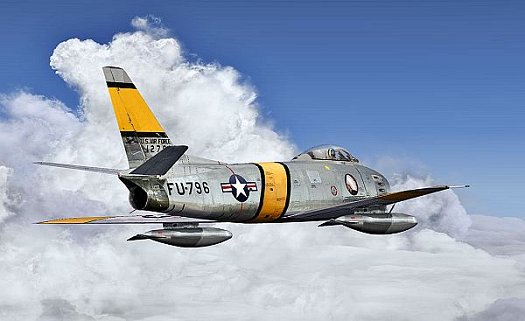 |
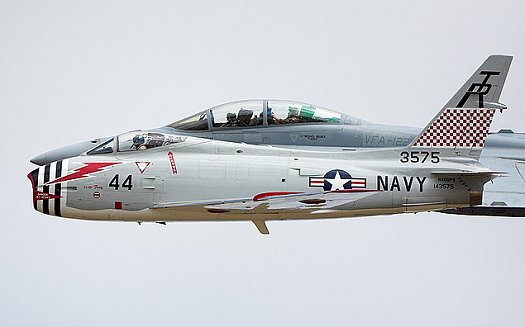
|

|

|
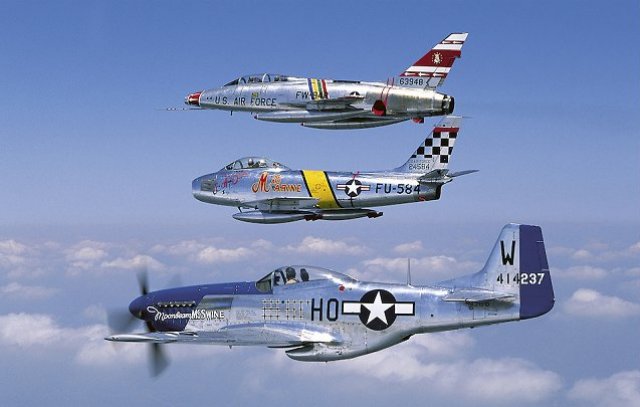

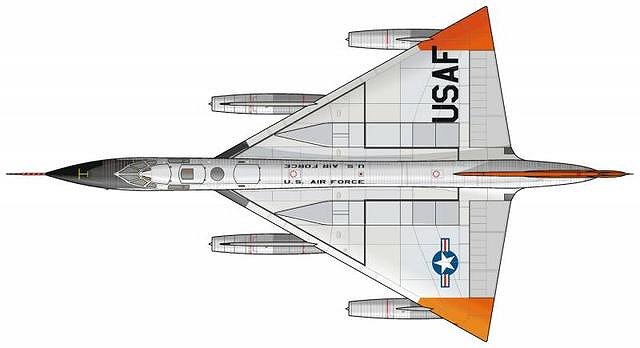

|
In October of 1952 Convair received a contract using the MX-1964 design as a basis, with further instruction that their design would be known as the B-58. At the time the Convair design staff was using the name "Hustler" within the family to designate the MX-1964; to the regret of some, the name stuck, and even became official. The MX-1964 was refined as Convair learned more during the development of the F-102 and the the F-106. The engines were spread out along the span into individual pods; "area rule" was applied to the fuselage to produce the so "coke bottle" appearance; conical camber was incorporated into the wing leading edges to minimize loss of efficiency at the wing tips and improve low speed handling; the trailing edge of the wing was angled 10 degrees to provide additional wing area increasing it to 1542 sq. ft., and the takeoff gross weight increased to 150,000 lbs. As seen in the above picture of the MX-1964 the search radar was located in the nose of the disposable fuel/weapons pod. Later refinement relocated the radar to the nose of the airplane and allowed for a shorter pod. Later wind tunnel tests confirmed that these refinements produced a significant increase in supersonic performance from Mach 1.6 to a sustained Mach 2.2 for the new design.
|

|
GENERAL CHARACTERISTICS
Crew: 3; PERFORMANCE
Maximum speed: Mach 2.0 (1,319 mph) |
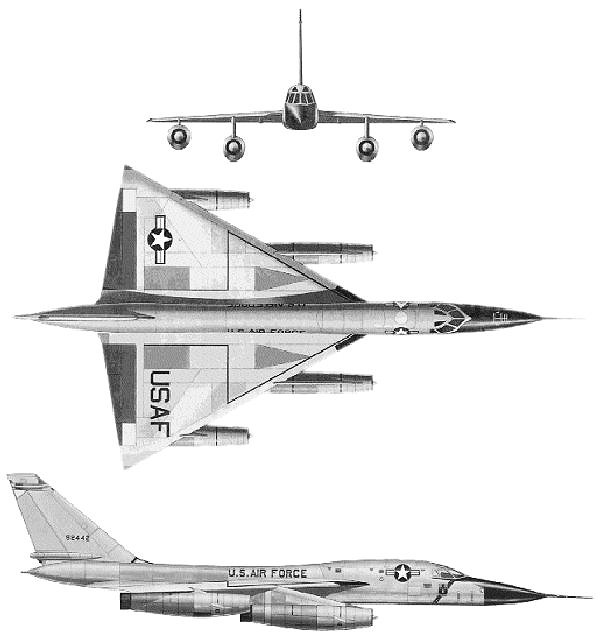 |
|
Because of it's speed and load carrying abilities the B-58 had to be very smooth and strong. It's skin was two thin sheets of aluminum bonded to a fiber honeycomb core. The interior stucture was very dense with numerous transverse aluminum spars running continuously accross the airframe from one wing to the other (See diagram). In addition, the entire wing and virtually all of the fuselage was filled with fuel. The airplane was literally a flying fuel tank. Among the many revolutionary advances embodied in the B-58 Hustler was the use of new procedures and materials in constructing the aircraft. Special demands were made on the airframe structure, not only in terms of aerodynamic loads, but also by virtue of its high speed, which through skin friction at Mach 2 could heat the exterior surfaces above 250 degrees F. With the inboard jet engines venting their exhausts beneath the wing, there was also concern over sonic fatigue at high sound levels affecting the wing structure. |

|
In tie-down tests Convair actually ran the inboard engines of a B-58 for ten hours with afterburners in maximum re-heat and sound levels up to 171 decibels to test the wing structure for sonic fatigue.
The J79 was developed in the 1950s for reliable Mach 2 performance. The U.S.A.F. had a requirement to power their next generation bomber which became the Convair B-58 and this application launched the J-79.
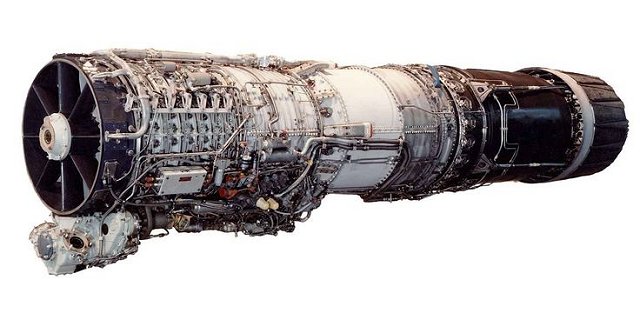
|
The J-79 is a single-spool turbojet with a seventeen-stage compressor with, what was at the time, a novel arrangement of variable stator blades which allow the engine to develop pressure similar to a twin-spool engine at a much lower weight. The J79 makes a particular howling sound at certain throttle settings. This strange feature led to the NASA operated F-104B Starfighter, N819NA, being named Howling Howland. Early engines also produced noticeable quantities of smoke, especially at mid-throttle/cruise settings, a disadvantage in a combat aircraft making them easier to visually spot. Later models were redesigned to be "smokeless". The J-79 is 17' 4" long and weighs 3850 pounds.
|
The J-79 was used on the F-104 Starfighter, B-58 Hustler, F-4 Phantom II, A-5 Vigilante, IAI Kfir and SSM-N-9 Regulus II supersonic cruise missile. It was produced for more than 30 years. Over 17,000 J-79s were built in the United States, and under license in various countries around the world.
Capabilities The B-58 set 19 world records for speed and altitude, including a low-level flight covering 1,200 sm (1,044 nm) at altitudes of under 150 meters (500 feet) with an average speed of 683 mph (610 kts), and a dash climb to a maximum altitude of 85,360 feet. One Hustler flew from Los Angeles to New York and back in 4 hours, 41 minutes.
In October 1963, another B-58 appropriately named GREASED LIGHTNING flew from Tokyo to London. Despite the fact that it had to slow down for five aerial refuelings, its average speed over the 9,232 mile (8,028 nm) flight was 1,073 mph (933 kts). Cruise speed for five hours of the journey was 1,414 MPH (1,230 kts) at an altitude of 53,000 feet. The aircraft would have had an even higher average speed if it hadn't lost an afterburner late in the mission.
One of the cababilities most commonly criticized on the B-58 was it's range. The airplane had, I think, rather amazing range for it's size. This was due to the fact that the airplane itself (wings and fuselage) was one large fuel tank. According to the AFM for the B-58A the wings and fuselage held 71,677 pounds of JP-4 in four tanks. In addition, the two-component TC-pod (shown below) contained 25,755 pound of fuel. Total fuel was then 97,435 pounds, or, 60% of the MTOGW of 163,000 pounds. (Later versions of the airplane reportedly held 5-6% more fuel.) This gave the B-58 a ferry range of 4100 nm., at Mach .92, and a combat radius of 1510 nm at as much as Mach 2.0. (The Boeing B-47 had a ferry range of 4647 nm and a combat radius of 2013 nm., all well below Mach 1.0.)

|
It would have been impossible to eject from the B-58 at Mach 2.0 and survive. So, each cockpit had an individual escape capsule - the first encosed escape system in an operational aircraft. Flight personnel were "sized" for the capsule at the start of training, and failure to fit the capsul was cause for separation from the B-58 program. The capsule can be closed and pressurized within 7 seconds in case of loss of cabin pressure at high altitude, enabling flight personnel to dispense with pressure suits. In this situation the pilot can see part of his instrument panel through a window in the capsule door, and with full control through the stick inside the capsule, he may fly the aircraft to an altitude below 40,000 feet and decapsulate. Buttons on the stick enable him while encapsulated to disconnect the autopilot, shift the center of gravity, and retard the throttles. In an emergency, rockets eject the capsule from the aircraft, with the enclosed personnel being protected against wind blast, wind blast erosion and thermal injury. After deceleration of the capsule, a 41-foot diameter parachute lowers it. The capsule contains survival gear, including a radio, rations, water, desalting gear, clothing, and a rifle, and will float if it lands in the sea.
|

|
|
The B-58 featured a state-of-the-art avionics suite. A Raytheon targeting radar was fitted in the nose, and the pilot was assisted by an autopilot that provided a "watchdog" capability, preventing the pilot from taking maneuvers that would be dangerous in supersonic flight. The bombardier-navigator, in the second seat, used a Sperry-Rand AN/ASQ-42V electronic navigation system, featuring a KS-39 astro-tracker and an AN/APN-113 Doppler navigation radar. The AN/ASQ-42V was highly capable and accurate, though since it was built with 1950s technology it with vacuum tube technology it weighed about 1,200 pounds. Today a system with better capabilities could be built in less than a tenth that size. A version of this same system was used very successfully on the SR-71 and the B-52. By the time the early problems had largely been resolved and SAC interest in the bomber had solidified, Secretary of Defense Robert McNamara decided that the B-58 was not going to be a viable weapon system. It was during the B-58's introduction that high-altitude Soviet surface-to-air missiles (SAM) became a viable threat, especially the SA-2 Guideline, a SAM system the Soviet Union extensively deployed. The "solution" to this problem was to fly at low altitudes, minimizing the radar line-of-sight and reducing exposure time. Because of the denser air at low altitudes, the B-58 could not fly at supersonic speeds and its moderate range was reduced further, thereby negating the high-speed performance the design paid so dearly for. General Curtis LeMay commander of the USAF Srategic Air Command (SAC) never liked the B-58. He was in to large fleets of heavy bombers (like the B-52) flying in droves that could carry thousands of tons of bombs to the enemy and "...bomb them into the stone age." |

|
A total of 116 B-58s were produced: 30 trial aircraft and 86 production B-58A models. Most of the trial aircraft were later upgraded to operational standard. Eight were equipped as TB-58A training aircraft. According to Col. George Holt, Jr. USAF Ret., "...15 B-58's were lost over a span of (in accidents during operational missions) 10 years."
The B-58 set no fewer than 19 world speed records, including coast-to-coast records, and one for longest supersonic flight in history. In 1963, it went from Tokyo to London (via Alaska), a distance of 8,028 miles in 8 hours, 35 minutes, 20.4 seconds, averaging 938 miles per hour. As of 2016, this record still stands. The aircraft was serving in an operational unit, and had not been modified in any way besides being washed and waxed. One of the goals of the flight was to push the limit of its new honeycomb construction technique. The speed of the flight was limited only by the speed at which they believed the honeycomb panels would delaminate. This B-58 was called "Greased Lightning" - the codename for the record attempt.
Some of the record winning aerospace trophies the B-58 won were the Bleriot trophy, the Thompson trophy, the Mackay trophy, the Bendix trophy and the Harmon trophy.
Singer John Denver's father, Colonel Henry J. Deutschendorf, Sr., USAF, held several speed records as a B-58 pilot.


I have logged thousands of hours in LearJet airplanes from 20 series, to 30 series, to the Lear 60, and have always been amazed at how these airplanes could have such delightful flying qualities with such a relatively simple control system of pulleys cables, and no power assist. The control harmony, especially in the 60 is about as good as it gets.
The one disapointment with the Lear 60 is that at altitude you must pull the power back to about 85% and cruise at Mach 0.8 or 0.81 because the wing was just not cabable of flying any faster and the whole airplane would start to shake. If the wing would allow speeds of Mach 0.84 or 0.85 and one could use that excess power, they would not have been able to build the 60 fast to keep up with demand, and maybe it would still be in production today.
So, to prevent belaboring the point I will just leave you with some delightful pictures of the 60, one hell of a nice airplane.
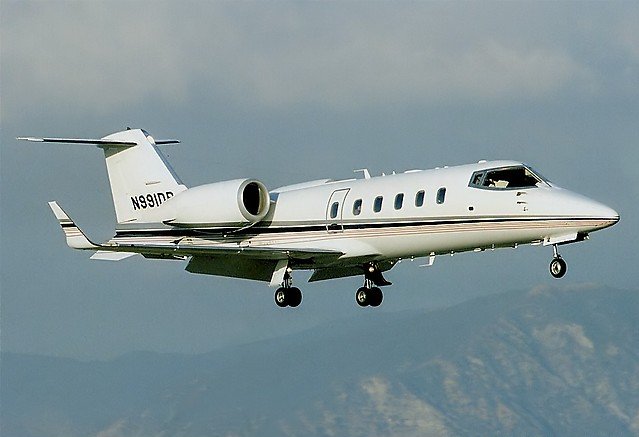 |
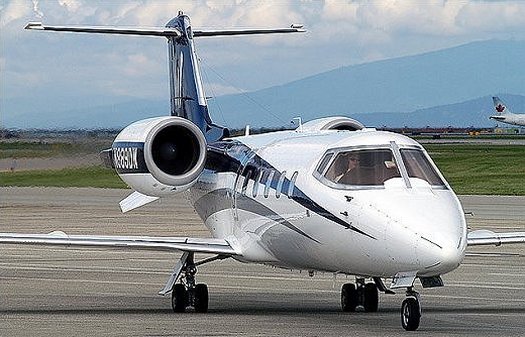 |
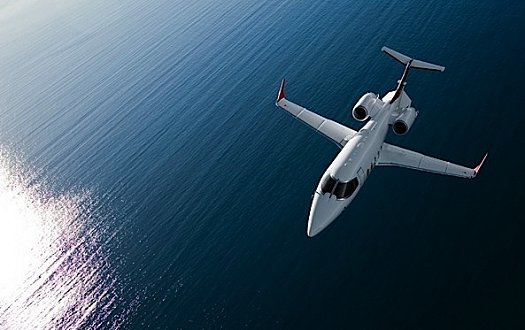 |
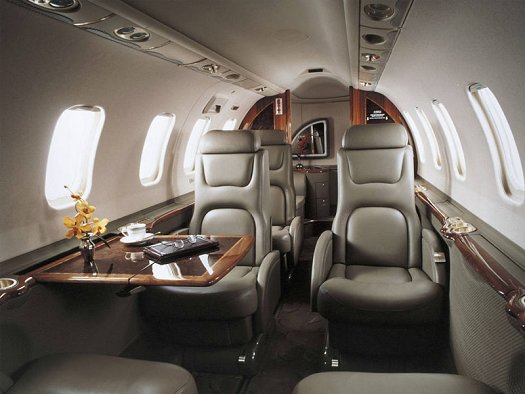 |
|
GENERAL CHARACTERISTICS
Passenger Seats: 6 to 9 PERFORMANCE
Vmo/Mmo: 340 kts/Mach 0.81 |
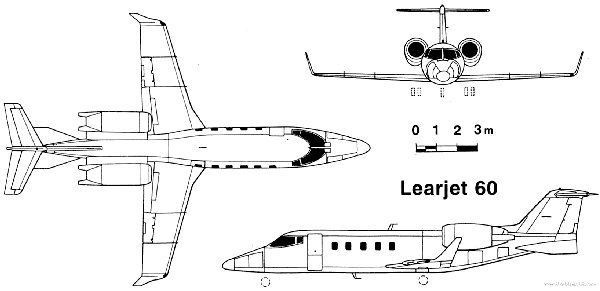 |
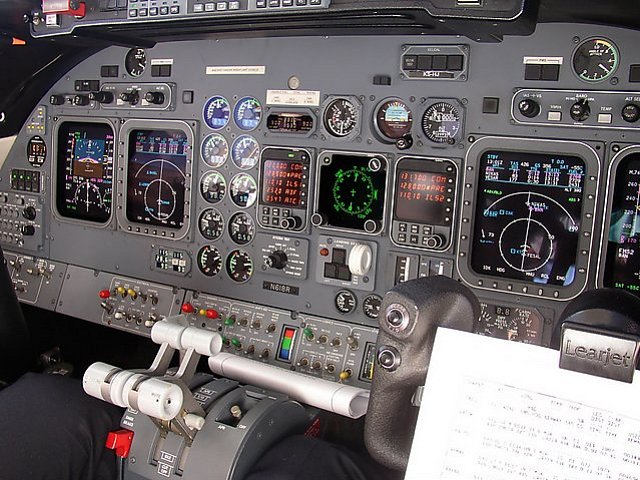
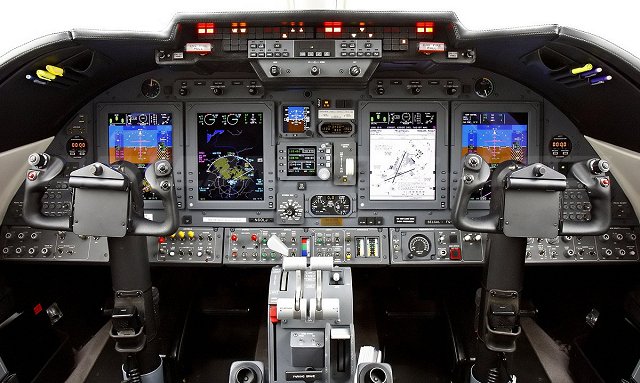

|
June 1, 2016 | |